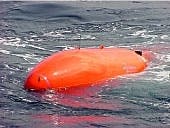Drilling tower offers versatility
The M.P.T. (multipurpose tower) drilling tower can be used for several oil field jobs. Drilling operations will be its main use, but by adjusting the tower with tensioners or other applications, it is suited for coiled tubing operations, flex-lay, and J-lay operations.
The drilling tower is equipped with active as well as passive heave compensation, dual drawworks, sand line winch with 4,800 m cable, a splittable block, and two drilling winches.
The drawworks is electrically driven and fitted with active heave compensation. The drawworks consists of two drums, each driven by a gearbox and a 400 kw electromotor.
The passive compensator consists of two cylinders located inside the tower.
The sand line winch is located inside the tower, Several tools, such as measurement instruments, can be lowered through the drill hole.
The splittable block design allows for modifying the number of falls in the block between the crown block and the traveling block. A maximum hook load requires a 12-fall tackle in which all the single blocks are attached to the traveling block. The maximum speed requires a four-fall tackle configuration.
Source: Huisman US Inc., 14450 T.C. Jester Blvd., Suite 180, Houston, TX 77014.
New process designed for ethylene plant use
A new process recovers high-purity 1,3-butadiene from crude C4 streams in ethylene plants.
The process selectively hydrogenates the C4 acetylenes and then recovers 1,3-butadiene from the butanes and butenes using extractive distillation technology.
The selective acetylene hydrogenation technology was developed by UOP LLC, and the extractive distillation technology was developed by BASF AG.
Source: UOP LLC, 25 East Algonquin Rd., Des Plaines, IL 60017-5017.
Analyzers measure CO2 to trace ppm levels
Xentra 4100 and 4200 analyzers promise accurately to measure C02 down to a few parts per million to provide, for example, advance warning allowing maintenance before higher levels can cause problems in cryogenic plants and facilities where natural gas is being converted to a liquid.
The 4100 is used in nonflammable gas streams with typical uses at air separation plants. The 4200 is suited for use when C02 is measured in a flammable gas.
The Xentra Series promises accurate gas measurements from trace levels to 100% purity. Units offer a selection of five gas sensors. Other enhancements include external autocalibration, RS232 digital output, and the capability to process, display, and output the reading from an external device or sensor. An improved sampling design offers fast speed of response for breakthrough detection in trace analysis.
The large edge-lit liquid crystal display shows the analyzer configuration and displays current gas concentration as well as information from external devices. The user interface features two levels of password protection and user friendly keypad. The series offers, as standard, two isolated 4-20 ma outputs with full zero and span adjustment and three dry contact, single pole relays.
Optional features include sample filter, sample and bypass flowmeters, internal and external autocalibration, extra ma and relay outputs, and bench, panel, or relay rack mounting.
Source: Servomex Co. Inc., 90 Kerry Pl., Norwood, MA 02062-4733.
Integrated survey vehicle works in deep water
The new HUGIN 3000 deepwater autonomous underwater vehicle (AUV) system is capable of reaching ultradeepwater depths of 3,000 m with an integrated survey payload.
It provides a high speed and cost effective solution to the study of the deepwater seabed environment, the firm says. Acquired data quality has been improved by the AUV automatically following the seabed topography, the firm notes.
This third generation ocean depth proved technology has evolved from a program that has performed more than 100 missions since 1995 in North Sea fields at shallower depths and with a simpler payload.
The untethered AUV is equipped with multibeam swath high resolution bathymetry and imagery, chirp side-scan sonar and subbottom profiler, differential GPS integrated with acoustic-inertial navigation, and acoustic communications. The system, a product of Norwegian company Kongsberg-Simrad, includes a high seas launch and retrieval system and is stored in two containers that can be air freighted worldwide. The AUV is being deployed in a free-swimming mode, without umbilical, from the mother ship for up to 2 days' endurance. It surveys at 4 knots before resurfacing for refueling of the aluminum oxygen fuel cell. The AUV collects sea floor and subbottom data on a predefined route, while sending samples of data back to the mother ship for quality control via "acoustic tether." The samples acquired are analyzed by on-board engineers who can order a route change if required by acoustic modems.
The 3000 AUV has undergone and completed sea trials in Norway's fjords and the Gulf of Mexico since December 2000. As of Jan. 22, 2001, the vehicle was fully operational and has successfully completed several deepwater projects for BP's Mardi Gras pipeline project.
Source: C&C Technologies, 730 E. Kaliste Saloom Rd., Lafayette, LA 70508.




